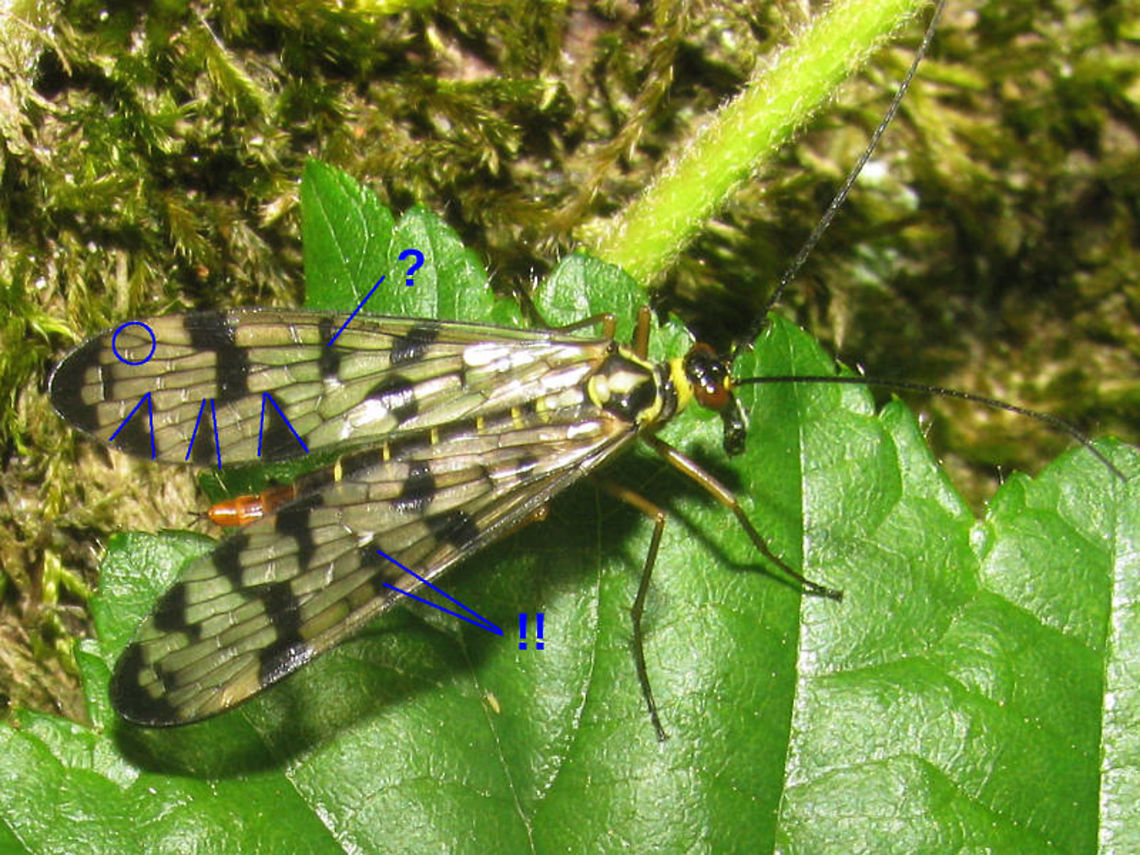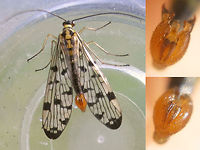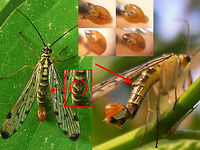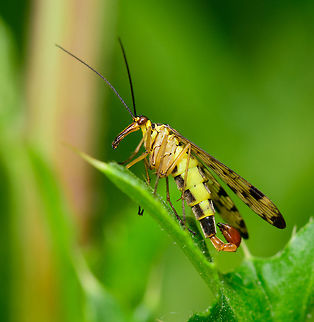
Panorpa germanica heavily marked with notes
Female Panorpa germanica with "heavier" than average wing pattern expression.
1) Quite typical for this species is that the three triangular spots across from the pterostigma are roughly the same size. In comparably patterned vulgaris/communis the basal one will be large and the middle one smaller.
2) Normally across from the third spot there is _no_ spot close to the pterostigma (empty circle), where in the other species this area will be spotted.
3) The spots marked with !! are normally separated in P. germanica and remain so very long while the pattern grows heavier during wing colour development. In this specimen the spots are fused in the left fore wing (marked ?) so this does happen, but a heavily marked specimen with non-fused "twin spot" will likely be germanica.
Always look at _all_ the characters mentioned here to assess the wing as a whole!! Aberrations in one of the characters are frequent, but all three is very very unlikely :o)
Here is a male with an "average", more open wing pattern for comparison, where you can clearly also recognize the patterns indicated:

Do always keep in mind that for males it is more secure to check clear morphological traits such as shown here:


Panorpa germanica (German Scorpionfly) is one of the most common species of Skorpionfly in large parts of Europe.

comments (2)